I have dataframe shown in below: column name 'Types'shows each types dified
I would like to add another column named 'number' defined as below.
df=pd.DataFrame({'Sex':['M','F','F','M'],'Age':[30,31,33,32],'Types':['A','C','B','D']})
Out[8]:
Age Sex Types
0 30 M A
1 31 F C
2 33 F B
3 32 M D
and I have another male table below; each column represents Types!
(It was difficult to create table for me, Are there another easy way to create?)
table_M = pd.DataFrame(np.arange(20).reshape(4,5),index=[30,31,32,33],columns=["A","B","C","D","E"])
table_M.index.name="Age(male)"
A B C D E
Age(male)
30 0 1 2 3 4
31 5 6 7 8 9
32 10 11 12 13 14
33 15 16 17 18 19
and I have female table below;
table_F = pd.DataFrame(np.arange(20,40).reshape(4,5),index=[30,31,32,33],columns=["A","B","C","D","E"])
table_F.index.name="Age(female)"
A B C D E
Age(female)
30 20 21 22 23 24
31 25 26 27 28 29
32 30 31 32 33 34
33 35 36 37 38 39
so I would like to add 'number' column as shown below;
Age Sex Types number
0 30 M A 0
1 31 F C 27
2 33 F B 36
3 32 M D 13
this number column refer to female and male table. for each age , Type, and Sex. It was too complicated for me. Can I ask how to add 'number' column?
